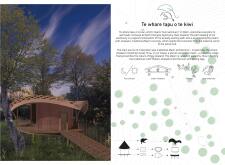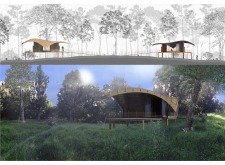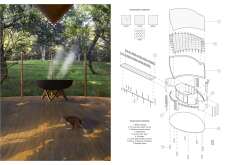5 key facts about this project
Te whare tapu o te kiwi, which means "kiwi sanctuary" in Maori, is located at Earth Energies Sanctuary in New Zealand. The design incorporates elements from Maori architectural traditions, creating a space for spiritual renewal and community. The structure emphasizes the connections between the natural landscape and Maori culture, providing an environment for contemplation and reflection.
Conceptual Framework
The project revolves around the idea of balance between human activity and the natural world. It highlights the importance of the kiwi, a national symbol of New Zealand. Pathways throughout the sanctuary guide visitors through various experiences, facilitating movement from one area to another. The presence of traditional Maori carvings, known as whakairo, marks the transition from the everyday world into a more spiritual setting. This thoughtful design invites visitors to engage deeply with the surrounding landscape.
Spatial Organization
The layout features distinct areas designed for specific activities. These include a greeting zone, meditation areas, and open-air spaces for yoga. Each section supports different practices, allowing visitors to choose solitude or community engagement. The careful arrangement of these spaces enhances the sense of peace, making it easy for people to find their own moment of tranquility among nature.
Material Selection
Materials used in the sanctuary reflect the region's traditional architecture. Reed roofing provides durability and fits well within the natural surroundings. Structural timber frames maintain stability and also contribute to the overall aesthetic of the environment. Other specified features—wooden terrace boards, wall plates, larch cover strips, stringers, laminated timber columns, and floors on beams and joists—work together to create a functional space that respects cultural traditions and the local landscape.
The structure's elevation, supported by timber columns, is reminiscent of traditional Maori meeting houses. This height gives the design a strong presence within its surroundings. The blend of materials and cultural motifs fosters tranquility, encouraging visitors to embrace both nature and spirituality during their time at the sanctuary.





















































